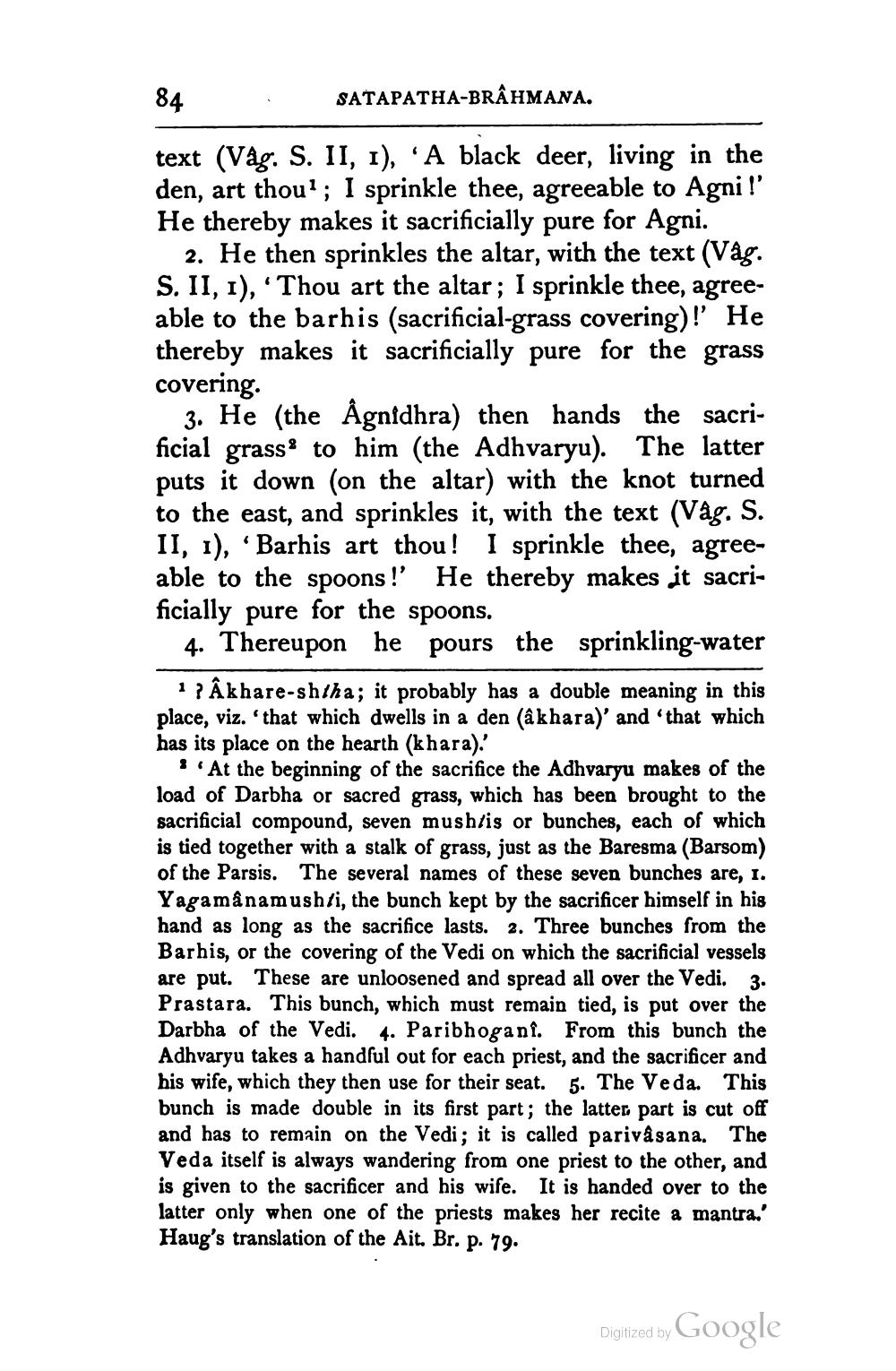________________
84
SATAPATHA-BRAHMANA.
text (Våg. S. II, I), 'A black deer, living in the den, art thou?; I sprinkle thee, agreeable to Agni!' He thereby makes it sacrificially pure for Agni.
2. He then sprinkles the altar, with the text (Våg. S. II, 1), ‘Thou art the altar; I sprinkle thee, agreeable to the barhis (sacrificial-grass covering)!' He thereby makes it sacrificially pure for the grass covering.
3. He (the Ågnidhra) then hands the sacrificial grass to him (the Adhvaryu). The latter puts it down (on the altar) with the knot turned to the east, and sprinkles it, with the text (Våg. S. II, I), ‘Barhis art thou! I sprinkle thee, agreeable to the spoons!' He thereby makes it sacrificially pure for the spoons.
4. Thereupon he pours the sprinkling-water ?? Âkhare-shtha; it probably has a double meaning in this place, viz. 'that which dwells in a den (âkhara)' and 'that which has its place on the hearth (k hara).
3 At the beginning of the sacrifice the Adhvaryu makes of the load of Darbha or sacred grass, which has been brought to the sacrificial compound, seven mushtis or bunches, each of which is tied together with a stalk of grass, just as the Baresma (Barsom) of the Parsis. The several names of these seven bunches are, 1. Yagamânamushti, the bunch kept by the sacrificer himself in his hand as long as the sacrifice lasts. 2. Three bunches from the Barhis, or the covering of the Vedi on which the sacrificial vessels are put. These are unloosened and spread all over the Vedi. 3. Prastara. This bunch, which must remain tied, is put over the Darbha of the Vedi. 4. Paribhogani. From this bunch the Adhvaryu takes a handful out for each priest, and the sacrificer and his wife, which they then use for their seat. 5. The Veda. This bunch is made double in its first part; the latter part is cut off and has to remain on the Vedi; it is called parivasana. The Veda itself is always wandering from one priest to the other, and is given to the sacrificer and his wife. It is handed over to the latter only when one of the priests makes her recite a mantra. Haug's translation of the Ait. Br. p. 79.
Digitized by Google




